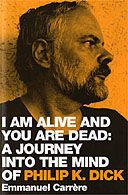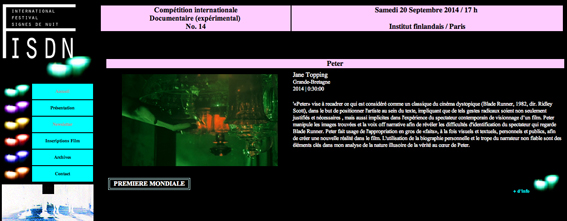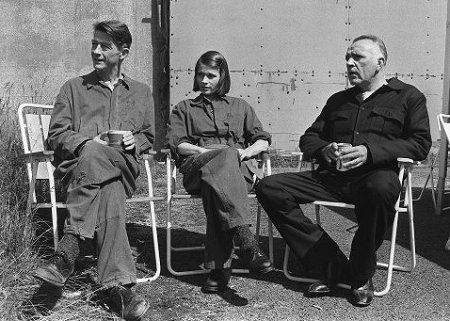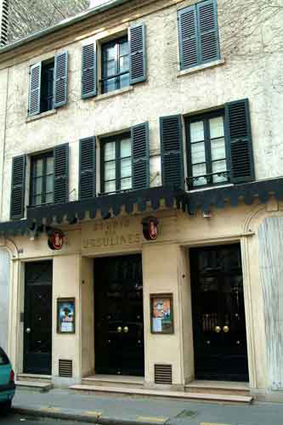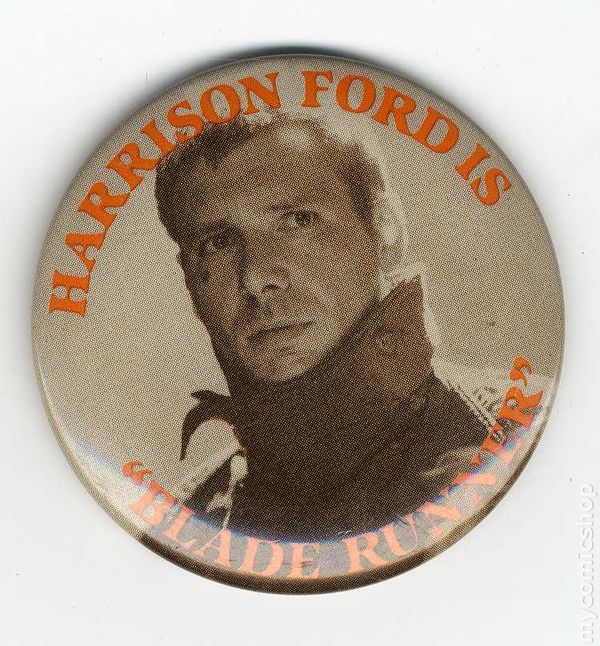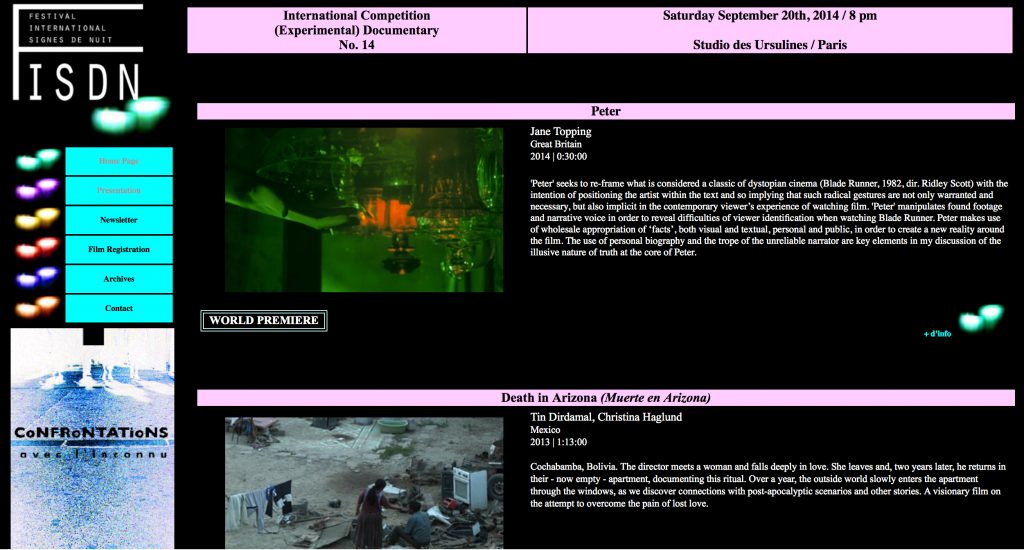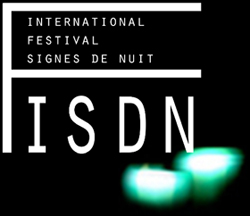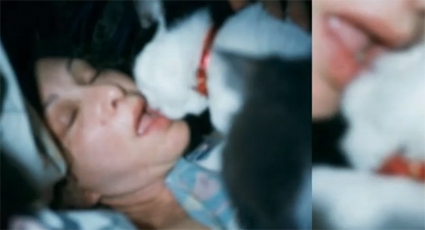Archive for September 2014
Emmanuel Carrère
Here’s a link to a wee piece on Emmanuel Carrère in the Guardian the other day. His book I am Alive and You are Dead was a great help when making Peter.
Read MorePeter now screening at Institut Finlandais – 5pm today
A change of venue for Peter’s Premiere to the Institut Finlandais. Here’s some info about the festival for you: International Festival Signes de Nuit An Independent World Festival History Since 2003 the international Festival SIGNES DE NUIT is active in Paris and world wide. In these last years we have presented some thousand films from…
Read MoreHito Steyeri – Lovely Andrea
Clare Stephenson recommended this 2007 film by Hito Steyeri, made for Documenta 12. And she was right to. Lovely Andrea And here’s an Afterall article by Pablo Lafuente on that and her film, November: For a Populist Cinema: On Hito Steyerl’s November and Lovely Andrea
Read MoreHeadlong’s 1984
Forgot to mention that I witnessed this at the Citz last week. 2 hours straight through, folk walking out and as much gore as I’ve seen on a stage. And I’ve seen a few Macbeths. Early concerns that it was too televisual soon melted with a thrice-repeated canteen discussion. And a finish that took more…
Read MorePeter screening at Studio des Ursulines 20/09/14
Studio des Ursulines is a legendary Paris film theater, and one of the oldest to be still running, opened on January 21 1926. It showed “Entr’acte” by René Clair, and “Freudlose Gasse” (Joyless street) by Georg Wilhelm Pabst, introducing Greta Garbo. Then it became a famous “Art and Essay” film theater, and when the “Jules and Jim” trio by François Truffaut go…
Read MoreDaily Inspiration
Peter and Muerte en Arizona
Peter will screen at 5pm, Saturday 20th September at Studio des Ursulines, Paris. Very excited to be showing along side Tin Derdamal & Christina Haglund‘s Muerte en Arizona (Death in Arizona). For more info and to watch an extract of Muerte en Arizona, take yourself off in this direction.
Read MoreThe 12th International Festival Signes de Nuit
My film Peter will be part of the 12th International Festival Signes de Nuit film festival taking place in Paris next week. It’s in the International Documentary (Experimental) competition. More info to follow, but check the festival out here and here. September 15 – 21, 2014 Studio des Ursulines 10, Rue des Ursulines / 75005 Paris…
Read MoreInfinity Kisses – The Movie
Just been revisiting this 2008 film by Carolee Schneemann (and Cluny & Vesper). Featuring ‘the expressive self-determination of the ardent cat’. Uh-huh. Infinity Kisses – The Movie
Read More